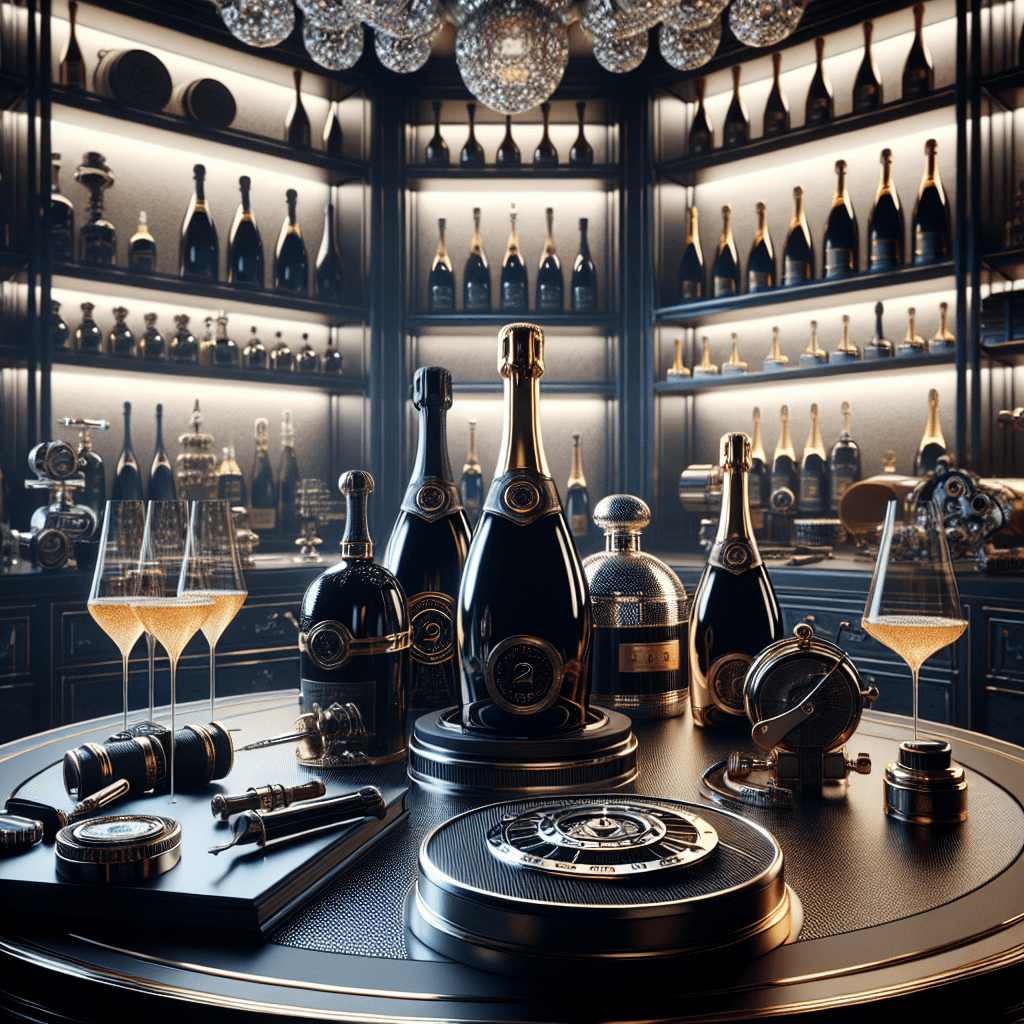Analyzing whether special edition bottles are worth the hype
The allure of limited-edition champagne releases captivates connoisseurs and collectors alike, blending the art of winemaking with the exclusivity of collectible treasures.
- Cultural Significance of Limited-Edition Champagnes
- The Craftsmanship Behind Each Bottle
- Current Market Trends in Limited-Edition Releases
- Collector Value: Beyond the Hype
- Concluding Insights on Champagne Collectibility
Cultural Significance of Limited-Edition Champagnes
The tradition of champagne, deeply rooted in the regions of France, transcends mere beverage status, symbolizing celebration, success, and refinement. Limited-edition champagnes elevate this tradition by intertwining the exclusivity of art and history with each release. These editions often commemorate significant events, achievements in champagne-making, or collaborations with renowned artists and designers.
For instance, the release of a limited-edition bottle might coincide with an anniversary of the champagne house or a historical milestone. Such releases are meticulously crafted, often featuring bespoke bottle designs and unique packaging that reflect their commemorative nature. The involvement of artists like Jeff Koons and designers such as Karl Lagerfeld in creating distinctive bottle aesthetics has bridged the gap between visual art and viticulture, rendering these bottles as pieces of art.
Moreover, the cultural impact of these champagnes is palpable at prestigious auctions and tastings, where enthusiasts gather to celebrate and critique these rare offerings. The narrative each bottle holds, coupled with the champagne’s own historical and geographical lineage, enriches its allure, making it a coveted item for cultural connoisseurs.
The Craftsmanship Behind Each Bottle
The creation of limited-edition champagne involves more than just exceptional winemaking; it is an art form rooted in deep knowledge and a meticulous process that ensures exclusivity and quality. Each step, from selecting the finest grapes to the intricate processes of fermentation and aging, is carried out with precision and care.
Champagne houses like Dom Pérignon and Krug have mastered this artistry, often reserving specific parcels of vineyard exclusively for their limited releases. The terroir of these parcels is carefully analyzed to ensure that it provides the desired characteristics that define the house’s signature style while also introducing a unique element to the limited edition.
The aging process is another critical aspect where craftsmanship comes to the fore. Limited-edition champagnes typically undergo extended aging on lees, which enhances their complexity and flavor profile. This prolonged maturation process not only contributes to the depth and character of the champagne but also to its longevity, making it a prized possession for collectors.
Each bottle is a testament to the champagne house’s legacy of quality and innovation. The meticulous attention to detail in the production process ensures that each limited edition stands out not only for its taste but also as a symbol of the winemaker’s craft.
Current Market Trends in Limited-Edition Releases
In recent years, the market for limited-edition champagnes has seen significant growth, driven by both increasing consumer interest in unique, high-quality champagnes and the strategic marketing efforts of champagne houses. These releases are often marketed as exclusive, once-in-a-lifetime opportunities to own a piece of the champagne house’s history, which appeals to both new enthusiasts and seasoned collectors.
The trend towards experiential luxury has also played a crucial role in the popularity of these editions. Consumers are increasingly looking for products that offer unique experiences, and limited-edition champagnes provide this by offering a taste of something rare and extraordinary. This shift towards experiential consumption is reflected in the way these champagnes are presented and sold, often accompanied by exclusive tasting events and elaborate marketing campaigns.
Furthermore, the rise of online platforms and social media has allowed champagne houses to reach a broader audience, creating a global demand for these limited releases. The digital storytelling surrounding these champagnes enhances their mystique and desirability, making them highly sought after in the digital age.
Collector Value: Beyond the Hype
While the allure of limited-edition champagnes is undeniable, the question remains: are they truly worth the hype? From a collector’s perspective, the value of these champagnes can be assessed through various lenses—historical significance, rarity, craftsmanship, and potential for appreciation.
Historically significant releases, such as those commemorating a major milestone or featuring a collaboration with a famous artist, often carry more weight in the collector’s market. Their rarity also plays a crucial role; the fewer the bottles produced, the more desirable they become. However, it is the craftsmanship and the quality of the champagne itself that ultimately substantiates its value as a collector’s item.
Collectors also consider the potential for appreciation in value. While this should not be the sole criterion for investment, the track record of limited editions appreciating over time due to their rarity and desirability is an attractive factor for many. However, it is essential to approach such investments with knowledge and caution, as not all limited editions will appreciate equally.
Concluding Insights on Champagne Collectibility
Limited-edition champagnes represent a unique intersection of art, history, and luxury. They are much more than just marketing gimmicks; they are a celebration of the champagne-making tradition, enhanced by exclusive craftsmanship and cultural significance. For collectors, these bottles offer not only the pleasure of tasting but also the joy of owning a piece of history.
Whether viewed as a marketing strategy or a genuine collector’s item, there is no denying that limited-edition champagnes have carved a niche for themselves in the luxury market. They continue to fascinate and inspire, promising not just a sensory experience but also a storied journey into the world of champagne.
For further exploration into the world of fine champagnes and their collectible editions, esteemed sources such as Wine Spectator’s Champagne Archives offer extensive insights and reviews.



